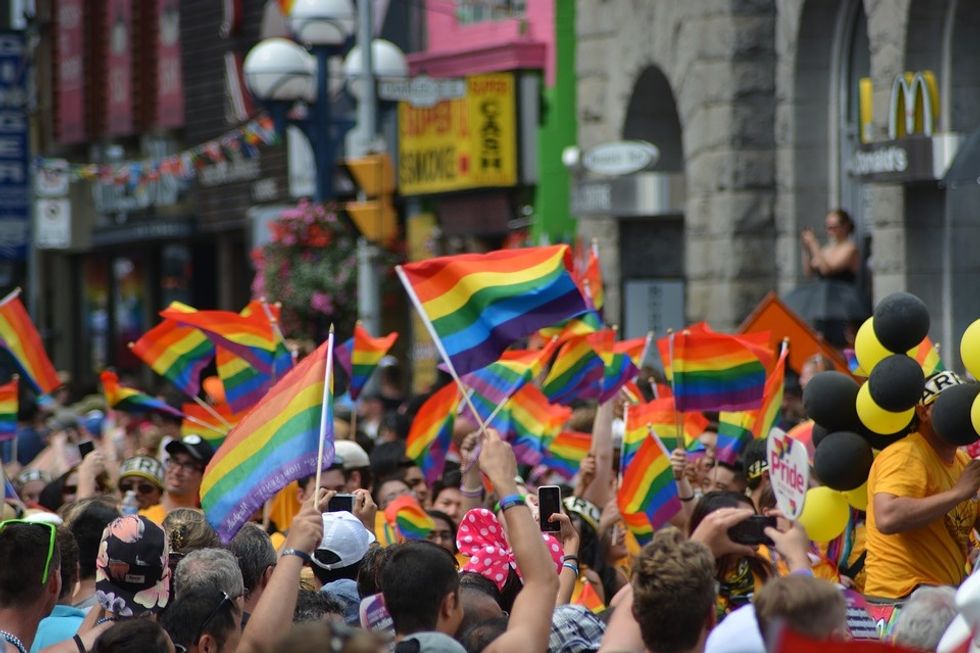The rainbow flag is the most recognizable symbol of LGBT+ lives there is. It unites and represents the entire LGBT+ community--although many often confuse it as only standing for gay men. Unlike other LGBT+ symbols (like the pink triangle), the rainbow flag has an interesting history of representing life and bringing together a community.
In 1970 Gilbert Baker, who was originally from Kansas but relocated to San Francisco, stitched together the first rainbow flag. The flag consisted of eight different colors--each with a different meaning. Pink stands for sexuality, red for life, orange for healing, green for nature, turquoise for magic, indigo for harmony, and violet for spirit. The eight stripe design was used until the flag was set for mass production. Pink fabric was not that accessible so it was taken out of the flag; soon after, indigo and turquoise were combined to make an even six color flag. The flag made its first appearance at the 1978 San Francisco Gay Freedom Day Parade.
After the 1978 murders of Supervisor Harvey Milk (the first gay man elected to office in California) and Mayor George Moscone demand for the rainbow flag skyrocketed. Throughout the fight for queer rights in the later half of the twentieth century, the rainbow flag became a simple of empowerment for the queer community that remains until today.
It was modified during the 1980s HIV and AIDS crisis when a small group from San Francisco added a single black stripe at the bottom of the six strip flag. The black strip symbolized all those whom we have or will lose because of AIDS related causes. This was referred to as the "Victory Over AIDS" flag. Another major modification came in 2017 when--after racist remarks were heard in the queer community of Philadelphia--brown and black stripes were added to the flag to represent queer people of color. These stripes were added to bring awareness to racial discrimination in the queer community.
The pride flag as come a long way since its beginning in 1970. While it was originally hand sewn In San Francisco, it is now mass produced and seen all over the world. From John Stout having to sue his landlords to be able to hang the rainbow flag off of his balcony in 1988 to the rainbow flag being flown on federal land 2017. The rainbow flag is one of many pride flags but it is one that represents the entire queer community.






















